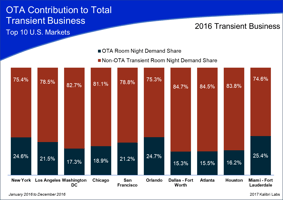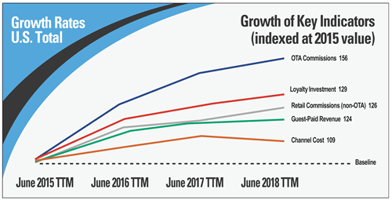By: Mark Mazzocco
Published Articles
No Such Thing as Fair Share
By Cindy Estis Green
For many years, those involved with hotel industry revenue have focused on the time-honored concept of fair share to give them a reference point for how much business is the right amount. This may be anything from a sales manager deciding how much production to expect from an individual travel agency to a revenue manager looking at the inventory allocations for OTA business.
Fair share is based on an average. If you produce the average amount as calculated by the aggregate of your competitors, you have achieved fair share. Most hotels consider that a successful outcome. There’s a lot of precedent for this calculation and many incentives attached to it. Few will be called out by senior management or ownership for getting their fair share. Even the name sounds pretty good – fair seems reasonable. So, what’s the problem? For hotels wanting to achieve their best – meaning getting the most profit contribution possible leading to higher asset values – it’s prudent and timely to revisit this concept.
Implications of the Digital Market
The digital market is more complex than the analog market of the past. Most notably, there are more combinations of demand drivers and channels. Most challenge profitability with higher acquisition costs. For large-scale organizations, many actions have moved to above-property teams calling for improved coordination between hotel, regional, corporate and/or brand. Large and small hotels alike have limited resources in both time, staff bandwidth and funds, so tradeoff decisions are frequently required. Few can afford to maintain legacy spending in sales and marketing plus more for digital and continue to fund rising third-party commissions. The economics rarely work out well – ask any asset manager.
Imagine if you could know:
-
Exactly which hotels you compete with for each rate category, and could calculate it by weekpart;
-
All the room nights you could capture by rate category from each of those competitors and at what rate
-
Which channels these room nights come through for you and your competitors, so you can better target them
-
How much profit contribution you could get from each of those room nights – the value after commissions and other booking costs are removed
-
The total value of all opportunities combined (net of sales costs) if you achieved the optimal business mix
-
Which room nights to target for displacement by day and month, because you have better business in your sights for those periods
The Fair Share Calculation
Let’s unpack the fair share calculation. It’s anchored in the calculation of average relative to the aggregate of your competitors.
First, let’s examine what average means:
• Who wants an average of corporate business when you have a premium
on rate and there’s high demand coming into your market?
Don’t you generally think you want more than the others?
• Who wants an average of group business if you have more meeting
space than many others in your market?
• Many hotels say they want to over-index (i.e., get a disproportionately
higher share) on Rack/Bar if the ADR contribution is most profitable.
• By the same token, many hotels want to under-index on third party
bookings that may carry the highest cost, and in many cases even lower ADR.
Optimal Business Mix and Optimal Share
When hotels pursue fair share, they’re often also aspiring to over- or under-index for certain business types. There’s an inherent conflict here. If hotels take a fresh look at the digital market and the legacy concept of fair share, they may conclude that what they really want is optimal share.
If a hotel sets its sights on the optimal amount of each type of customer, it will deliver the highest profit contribution to its owner. Anyone looking for fair share may well be accepting average performance. While this will be a stretch goal for some, average could be far below the best many hotels can achieve.
If you knew all of the information from the sidebar, you could derive your own optimal business mix and set targets by rate category and weekpart for on-property and above-property teams. You’d have the confidence to surgically target acquisition spending on the top opportunities because they’d be distilled from the broad swath of business as (1) realistically available and (2) incremental to existing business.
That is, you could spend the same or potentially less because you’d only make growth investments for incremental business that you could realistically capture. And you’d spend minimum funds on business requiring maintenance. You’d know exactly when to over- and under-index for each business type in your mix and how much it’s worth spending. There’s no room for average in this calculation … it’s all about what’s optimal.
Read the full article on Hospitality Upgrade
Learn more about our Revenue Strategy platform, powered by Optimal Business Mix algorithm
data-animation-role="button"
data-alignment="center"
data-button-size="medium"
data-button-type="primary"
>
class="sqs-block-button-element--medium sqs-button-element--primary sqs-block-button-element"
>
Schedule a demo
data-animation-role="button"
data-alignment="center"
data-button-size="medium"
data-button-type="primary"
>
class="sqs-block-button-element--medium sqs-button-element--primary sqs-block-button-element"
>
Contact Us - to Learn More




